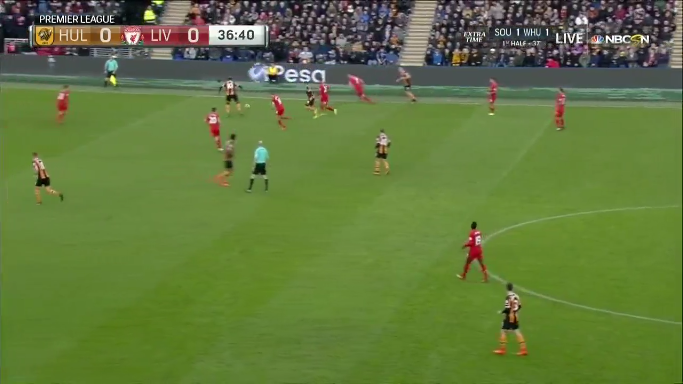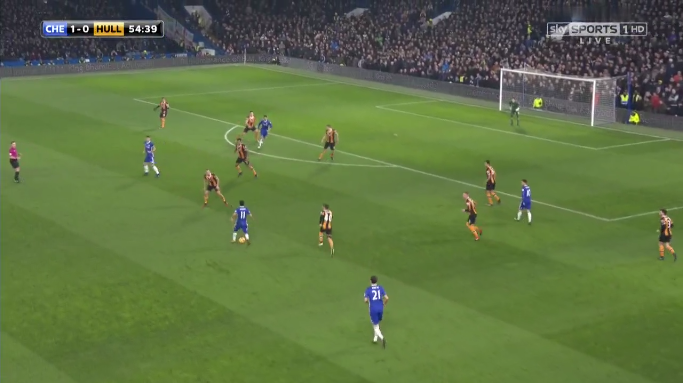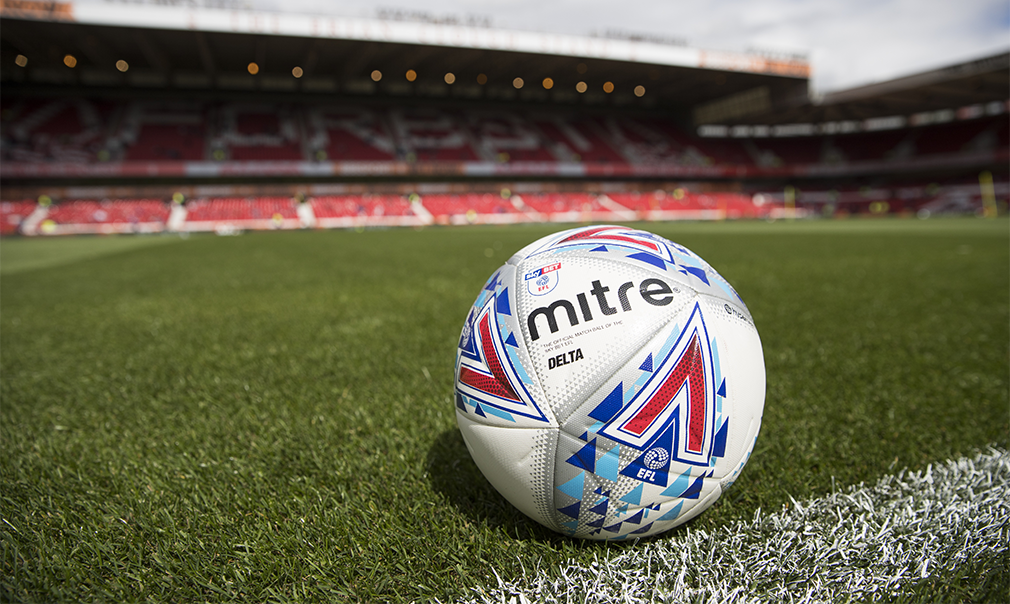
While this website has made its name focusing on the lesser known youth of this beautiful sport, and combined it with a tinge of tactical flavour meant for the football enthusiast, we found a large gap to be exploited in terms of combining the two. This mini-series thus focuses on young managers (below the age of 45) and their tactical philosophies, deriving what got them here and where they could go. Ross Bramble turns to Marco Silva, the man making waves at Hull.

Background
Marco Silva is a man in vogue right now. Having joined relegation-threatened Hull City in January 2017 to the controversial and public outcry of certain pundits, Silva was a man immediately under the microscope. His tenure as Tigers boss has already seen the team completely revitalised, capturing the essence of his previous sides, Estoril, Sporting Libson and Olympiakos. His early career success, in particular with Estoril and the dominating Greek champions, had already seen him linked with vacancies at Nottingham Forest, Wolverhampton Wanderers and LOSC Lille. His stock has already risen so high inside his first month in the Premier League that fans of much bigger sides have been signalling their desire to see the Portuguese tactician at their clubs – but just what is Marco Silva doing to earn such acclaim?
Tactical Philosophy
There is a stereotype applied to most young, up-and-coming managers that their games are defined by high pressing, endless possession and silky number tens. The style after all has seen enormous success for Mauricio Pochettino and Pep Guardiola in particular. Marco Silva is a different breed of coach, however; his greatest influence is on the space between a player’s ears, rather than at their feet.
That’s not to say the Marco Silva way doesn’t include elements of conventional tactics, though. Pacey wing play and a pressing game in defence are still important components in Silva’s style, but the real trick is to teach players the finer details of space, organisation and movement, so that they can make better decisions as a game progresses. Unlike other modern coaches such as Jurgen Klopp, the Portuguese’s first thought is to keep a clean sheet, rather than to out-gun their opponents. Even at a side with a crowd as demanding of dominating, attacking football like Olympiakos, Silva’s priority was organisation and defensive structure. His main form of attack is counter attack – the Greeks even used to joke that his side were so eager to counter, they would often consider giving the ball to their opponents just to break on them.
Formation & Tactical Structure
It would be a little narrow-minded to suggest that Marco Silva operates with a strict, unwavering formation, having been seen to adapt his team’s shape depending on both the quality of his opposition and that of his own squad. That being said, certainly in his time across Estoril, Sporting, Olympiakos and Hull, the seeming formation of choice is a tried and true 4-2-3-1. The main reason for this shape, it seems, is its quick and effective transition from attack to defence, as shown in the graphics below.

Made using TacticalPad

Made using TacticalPad
These graphics show how quickly the team can swap between both phases of play. In attack, four player progress up-field to offer offensive options, with full backs adding width and one of the two holding midfielders stepping further forward as a deeper option. The graphics above depict the line-up that conquered Liverpool at home in the Premier League, which showcased both shapes.

– Huddlestone sits between the lines of midfield and defence, N’Diaye and Evandro combine to press through the middle, and winger Clucas re-takes his position out-wide, having aided off-screen full-back Robertson moments earlier.

– With Huddlestone and N’Diaye committed further up field, Evandro sits deepest as cover. As Huddlestone sees N’Diaye winning the ball higher up-field, the midfielder begins to drop back in to the holding role, allowing the more creative Evandro to step forward and join the attack.
While at Olympiakos and Estoril, Silva adopted the 4-2-3-1 in the lion’s share of his games in charge. The defensive structure allows the midfield to almost spring-load, allowing for a quick transition in to attack when the team regain possession. The formation allows the collective to unite as a stronger unit than relying on one or two players more adept at filing the role. At Sporting, however, Silva was known to deploy the 4-1-4-1 defensive formation as an attacking formation, since William Carvalho was available to play the holding role. With a great array of talent on hand, Silva was able to add a further player to the attack, knowing that Carvalho could handle himself alone during the time it took for the midfielders to drop back in to a defensive shape when dispossessed.
Silva’s Defensive Approach
With the team operating in a 4-1-4-1 in defence, the key for Silva is to fill space and cut out options for his opponents. The wingers drop back to help cover the wing backs, stepping in and out of the centre of the pitch depending on which way the opponent is attempting to go to break the side down. That said, wingers never step far in-field, as that of course is the domain of the two central midfielders and their deeper defensive midfielder.
A pressing game is of course implemented here, but not to the level of a Mauricio Pochettino or a Johan Cruyff. Players are encouraged to get harry opponents and push them further back, sometimes hunting in packs, but swiftly returning to their positions as to shut down space. Players shadow the ball as it crosses the field, pressing where possible to force errors and push the player further back. As mentioned earlier, the midfield is spring-loaded in this sense for the high paced counter attack. With players willing to break from their positions to win the ball back, the momentum is behind them and against the player dispossessed when the ball finally returns to Silva’s side.
The defensive midfielder shadows the play behind his midfield four, adding an extra body to cut out space to creative outlets. His pressing game is not restricted to the zone behind his midfield – straying further would leave too many gaps behind, and that sort of over-commitment could be the difference between a clean sheet and a goal. The key for the players here is using their own initiative; Hull centre back Curtis Davies reports that Marco Silva physically moves his players in to the positions he wishes them to fill during phases of play, working meticulously to show his team where to be and when to decide to be there. As a game develops, players take these lessons and apply them on the fly – “where would Marco put me if we were training?”, if you will. These sorts of perfectionist details, coupled with the faith Silva puts in his troops and freedom he allows them to make their own choices, breeds a confidence and assurance amongst his team in defence that has immaculately highlighted by Hull’s revitalised defensive shape.

– In their 2-0 defeat away to Chelsea, Hull protect their box with Evandro pressing the ball as it progresses across the field. Huddlestone remains between the two banks of four as an extra body, as Clucas, previously aiding the full back Robertson, runs to fill the space ahead, where Diego Costa is attempting to bend a run.

– Hull track back as Chelsea counter – Huddlestone, as the deepest midfielder, follows the play back between the back line and the retreating front four, cutting out inside options. Meyler returns to the defence with him, with the four defenders well positioned during their attack to be available to fall back in to their defensive shape quickly.
Silva’s Offensive Approach
Just as defending is about cutting out options for their opponents, attack is all about creating options for themselves. Counter attacking football follows the same tried and true formula – organise well, win the ball back, spring out of the traps and attack direct. Knowing that direct running isn’t always going to win the day, Silva seeks to pack the dangerous areas with players to create options for his side to play through and pull the opposition around.
One of the two primarily holding midfielders joins the attack, supporting from deeper and acting as an insurance policy to slow play down or out-right win the ball back should a counter attack break down. He is the defensive midfielder’s last line of defence, as it were, but also an outlet with a wide passing range should a counter attack slow and require a new angle. Ahead of him, the three attacking midfielders offer options on both wings and through the middle, stepping a little closer to one another than perhaps other managers may advocate. This, again, is to create options; players out of possession need to be thinking two or three passes ahead, and how best to make themselves available for their nearest team mate should they be next on the ball. The real width is created by the full backs, who dart in to space out wide, available as both an option for a play-switching long pass, or a short option on the overlap should their nearest winger come in to possession.
Up front, the lone striker dovetails into space and nearer the ball to offer options both short and long. Wingers pull in closer to them, drop out wider, whichever option offers the most use at the time. The constant movement and body-overload for the opposition defence makes deciding who to mark far trickier, with options developing and changing all around.

– In the 0-0 away league draw against Manchester United, Hull begin a counter attack, with Huddlestone remaining deepest, four midfielders joining the attack, creating options for their nearest team mate. Niasse drops deep to offer himself as a give-and-go option with Lazar Markovic, or perhaps to pivot the play back inside to on-rushing midfielders.

– Although the attack has broken down, the screenshot above showcases the bodies available and options created by Silva’s counter attacking style. Huddlestone again remains deepest, with three attacking midfielders, a wing back, and central midfielder and a striker all ahead, pressing the ball and available to provide options on the counter, occupying large spaces and remaining close to potential ball-winning allies.
Career-Defining Games
FC Porto 0-1 Estoril – Heading to the Estádio do Dragão had become an impossible task between 2008 and 2014. Porto had not been beaten at home since a 2-3 defeat to Leixões S.C., and to make the task even more daunting for Silva’s men, Estoril had never beaten the Portuguese giants away from home. History was made on February 23rd though, when an Evandro penalty late in the day gave Estoril a famous victory. Despite his all of his previous success as Estoril boss, promoting them from the second division as champions and qualifying for Europe in his first season in the top flight, the Porto victory was one of the first moments the big boys in Europe began to take Silva’s name more seriously.
Arsenal 2-3 Olympiakos – Speaking of games that put Europe on notice, there were no results bigger for Marco Silva than the 3-2 away win over English giants Arsenal during his time in Greece. Silva set his team up masterfully, keeping Arsenal at bay and proving a far tougher adversary than many English fans and pundits had anticipated. Once again, Silva secured a result that put his name firmly on the lips of European clubs and fans alike, stunning the Emirates with a famous victory.
Hull City 2-0 Liverpool – Since Silva’s arrival in England, the Tigers have beaten Manchester United at home in the second leg of the League Cup semi-final, kept a clean sheet at Old Trafford in the league and beaten relegation rivals Bournemouth and Swansea. They were even a little unlucky to lose against Chelsea and Manchester Utd in the first leg of the cup, to be frank. Their revitalisation was highlighted for everyone in the 2-0 home win over Liverpool, where the albeit off-colour and unconfident Merseyside club were dispatched with consummate comfort.
Three Key Players Developed
Evandro – Evandro’s career had been a little sporadic in the years before his move to Estoril. His five years at Atlético Paranaense saw only 59 appearances for the midfielder, and 4 loan spells. His move to second-tier Estoril may have seemed a career dip at the time, but the Brazilian became a staple in Silva’s side. His performances earned him a move to Porto in 2014, before joining Silva at Hull in 2017, where he has impressed with his early performances.
Omar Elabdellaoui – Another player who failed to settle before Silva, Elabdellaoui spent time in the Manchester City youth set up before three loans to Strømsgodset, Feyenoord and Eintracht Braunschweig bought only 31 appearances between them. The German side were sufficiently impressed by his performances to sign him in 2013, but the full back was eventually sold on to Olympiakos a season later. He played 47 times for the Greek champions, becoming a trusted figure in Silva’s style. Much like Evandro, Silva added the defender to his ranks at Hull City on a loan deal, and has been in good form in the opening few weeks of his tenure.
Sam Clucas – Clucas has never been a man in vogue in English football. His career has seen him turn out for little known clubs like Nettleham and Jerez Industrial, before Hull added him to their ranks in 2015. At Hull, Clucas has grown and developed as a reliable hand without becoming one of the first names on the team sheet. His early development under Marco Silva however has been profound, and Clucas’ position in the side seems untouchable. The Englishman seems to have bought in to the manager’s philosophies, and provides an excellent outlet out wide.
Read all the other articles from this series here
- Tactical Philosophy: Domenico Tedesco - September 25, 2018
- Bilic, Gold & Sullivan: Which is the West Ham Way? - September 11, 2017
- Southampton: The Claude Puel Chronicles - July 10, 2017
























































